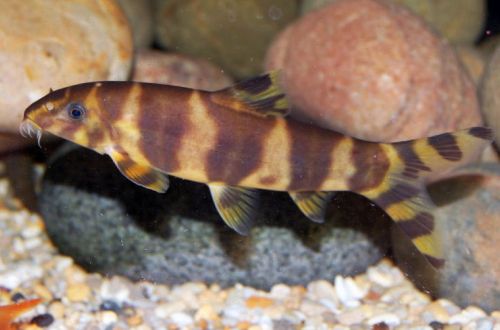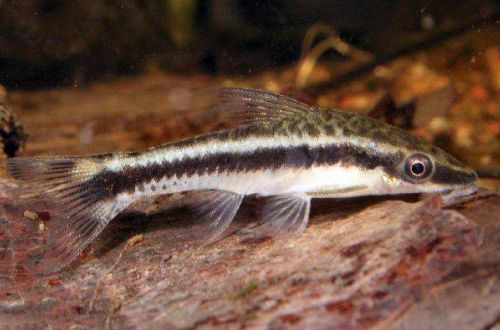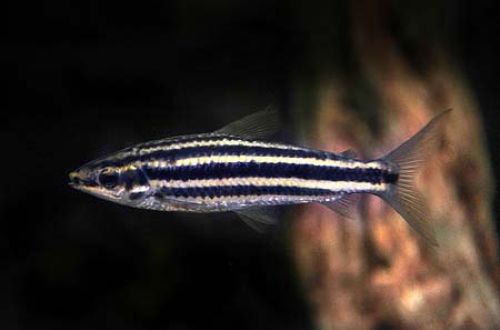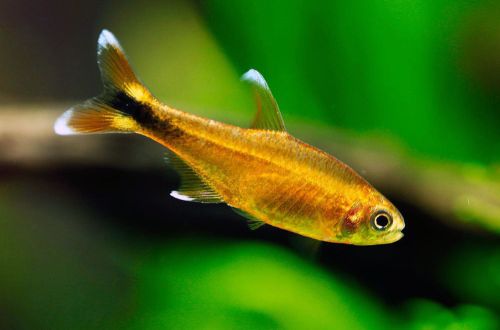
imperial bocilia
Imperial Bocilia, scientific name Botia udomritthiruji, belongs to the family Cobitidae (Loaches). Unpretentious and relatively easy to maintain. It is distinguished by its original recognizable body pattern, which, however, largely echoes the coloring of its closest relatives Botsia histrionics and Botsia Kubota. Compatible with other non-aggressive fish and can be recommended for beginner aquarists.

Contents
Habitat
It comes from Southeast Asia from the territory of modern Myanmar. It is found only in the Tanintayi region in the basin of the river of the same name, which flows into the Andaman Sea. The natural habitat is characterized by sand and pebble substrates littered with numerous snags. Throughout the riverbed there are large shallows and sandy islands. Aquatic vegetation is sparse, growing mainly along the coast. The water is muddy.
Brief information:
- The volume of the aquarium – from 240 liters.
- Temperature – 23-28°C
- Value pH — 6.0–7.5
- Water hardness – soft (2-9 dGH)
- Substrate type – rocky / sandy
- Lighting – subdued / moderate
- Brackish water – no
- Water movement – moderate / weak
- The size of the fish is 13–15 cm.
- Food – any, preferably sinking food
- Temperament – peaceful
- Content in a group of at least 5–6 individuals
Description
Adult individuals reach a length of up to 13–15 cm. Sexual dimorphism is weakly expressed. Females differ from males in size, the latter are somewhat smaller. The body pattern consists of five wide dark stripes. The main color is yellowish with an orange tinge. With age, the stripes blur, merging with the background, the color becomes darker.
Food
An omnivorous species, it will accept any food intended for aquarium fish: dry, live and frozen. The main condition is that plant components must be included in the diet, if they are not in the composition of ready-made feeds. Pieces of vegetables and fruits, such as cucumbers, melons, apples, etc., may be suitable for this purpose. Delicate plants may suffer if there is a lack of herbal supplements.
Maintenance and care, arrangement of the aquarium
Recommended aquarium sizes for a group of 5-6 fish start at 240 liters. The conditions of detention are quite simple. It is necessary to ensure high water quality, which is achieved by installing a productive filtration system and weekly replacement of part of the water (25–35% of the volume) with fresh water. Equally important is the regular cleaning of the soil from organic waste and glass from plaque.
In the design of the aquarium, a rocky or sandy substrate is used, a few snags as a shelter. The lighting is subdued, so give preference to shade-loving plants. Mosses and ferns, which can be attached directly to driftwood, are excellent choices. The rest of the design is arbitrary.
Behavior and Compatibility
Periods of activity are replaced by long pauses of calm. At this time, the Imperial Bocilia hides in shelters. It is not uncommon to see it crammed into cracks or narrow spaces, such as between a filter and an aquarium wall – don’t worry, this is normal behavior. They prefer to stay in a group of 5-6 individuals. At smaller numbers, they can become unnecessarily restless and a problem for other fish, especially if they are smaller. Otherwise compatible with many popular aquarium fish. It is worth avoiding the introduction of species with long veil fins. There is a high chance of damage.
Breeding / breeding
At the time of writing, there are no successful cases of breeding Imperial Bocilia in the home aquarium. On a commercial basis, they are bred in fish farms with the use of hormones to stimulate spawning.
Fish diseases
By their nature, non-ornamental fish species that are close to their wild relatives are quite hardy, have high immunity and resistance to various diseases. Health problems can be the result of inappropriate conditions, so before starting treatment, check the quality and parameters of the water. If necessary, bring all values back to normal and only then begin treatment, if necessary. Read more about diseases, their symptoms and methods of treatment in the section “Diseases of aquarium fish”.





